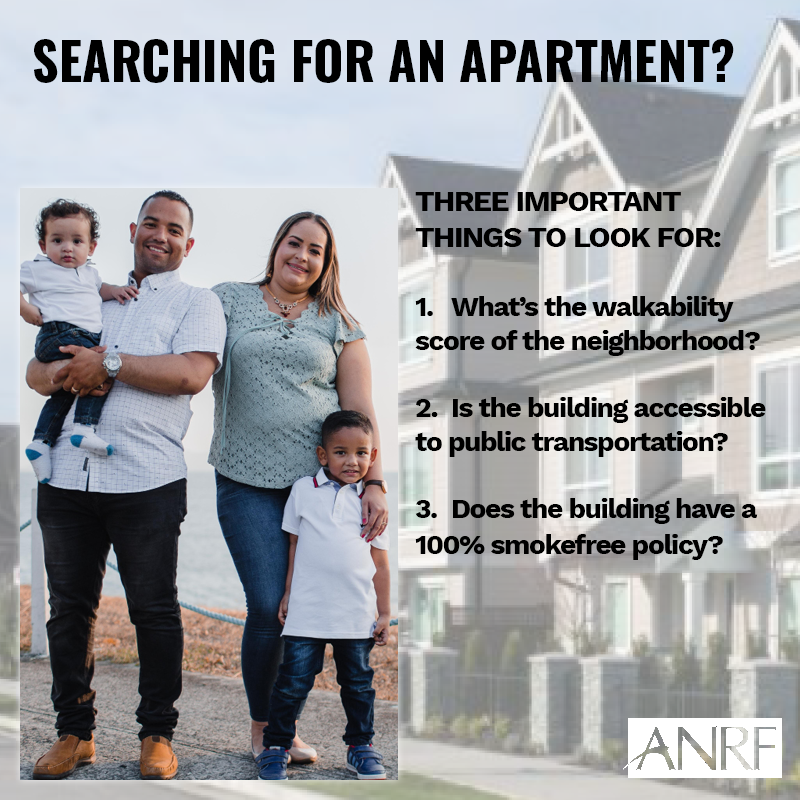When looking for an apartment, you don’t want your new home to be a toxic health hazard. Your apartment should be a safe place to breathe—for you and your family.
- Does the building have a 100% smokefree indoor air policy covering all units? Most people today are nonsmokers, but many people are still secondhand smokers—especially when that smoke drifts into your apartment from somewhere else in the building. If you choose not to smoke, you shouldn’t have that healthy choice taken away by a neighbor’s drifting smoke.
- Even if all the current tenants are nonsmokers, what if someone moves out? You want to be sure that the building has a policy to ensure that any new neighbors moving in will also be expected to comply with the smokefree policy. In some places—including New York City, San Francisco, and Oregon—landlords are required to disclose up front what their building’s smoking policy is and, if the building doesn’t have a 100% smokefree policy, to specify which units still allow smoking.
- Does the smokefree policy also apply to marijuana secondhand smoke? Nothing like waking up to the smell of old bong water from the neighbor downstairs every day. Breathing secondhand marijuana smoke has health risks. Even in states where marijuana is now legal, marijuana should be used in ways that don’t impact the health of others. Smoke is still smoke.
- Was the unit smoked in by a previous tenant? If the management has tried to cover up prior smoking with fresh paint, the hazardous thirdhand smoke residue that sticks to walls, ceilings, carpets, and ventilation systems will likely still leech through. This residue will not only create a funky smell, but it’s also a potentially serious health risk.
- Does the smokefree policy cover balconies, patios, courtyards, and common areas? It can be a real drag trying to relax on your balcony or enjoy hanging out poolside if someone else thinks it is their smoking area.
Today more than 50 communities require all multi-unit housing to be smokefree. This makes it easier to find a place to live smokefree without relying on the building management’s policy. There may also be an online smokefree apartment directory in your area.
If you want your community to adopt a smokefree law for multi-unit housing, some ways to start are to contact your local tobacco control coalition and share your story with your city council member or other local elected official. Let them know that being able to breathe smokefree air is important to you and that you want local action on this important health and safety issue.
What if you find yourself in an apartment building that does have indoor smoking? If your city doesn’t have a smokefree law yet for multi-unit housing, there are still things you can do. Check out our resources and take action.
Remember—air purifiers don’t address the health hazards of secondhand smoke. These machines may help reduce the odor, but they cannot actually protect your health from the gases and toxins that are in secondhand smoke. There is no safe level of exposure to secondhand smoke, and even a little bit can cause big health risks, especially to the cardiovascular system. If you can smell it, it means exposure levels are already quite high.
Don’t be afraid to speak up to ask for a smokefree apartment—your health and comfort may depend on it!






